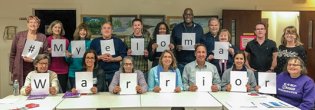Consolidation therapy is generally defined as treatment given for a short duration (i.e., 2 to 4 cycles), usually with the same regimen used for induction therapy, following high-dose therapy with autologous stem cell transplant (ASCT). The goal of consolidation therapy is to further deepen response.
What Is Consolidation Therapy?
In the context of non-transplant patients, consolidation therapy can be defined as the continuation of frontline therapy for 2-4 cycles after the first 4- to 6-cycle course of frontline treatment, and before maintenance therapy is given. As in the post-transplant setting, the goal of consolidation for non-transplant patients is to deepen and/or consolidate the gains made with the initial cycles of therapy.
In What Settings Is Consolidation Therapy Used?
Consolidation is not currently the standard of care for myeloma, but is incorporated into many clinical trials. Until and unless the results of those trials demonstrate that this therapy adds an overall survival benefit, it will not be covered by insurance plans for clinical practice (i.e. outside the context of a clinical trial) in the U.S. or by government-funded healthcare programs outside the U.S.
What Is the Timing and Duration of Consolidation Therapy?
The number of cycles varies from trial to trial, so there is no established duration of consolidation treatment either for patients who have had a planned autologous transplant or for those who have not. Generally, consolidation lasts for 2-4 cycles.
Clinical Trial Results with Consolidation Therapy
The 700-patient IFM 2009 trial of Velcade (bortezomib), Revlimid (lenalidomide) and dexamethasone (VRd) with or without transplant was designed to answer the question "If patients are given optimal frontline, consolidation, and maintenance therapies, is it still necessary for them to undergo transplant?" In this trial, all patients received three cycles of VRd as induction. Transplant recipients were given two cycles of post-transplant VRd consolidation therapy prior to a year of Revlimid maintenance; non-transplant patients received five cycles of additional VRd prior to a year of Revlimid maintenance. A sub-group analysis of patients with high-risk cytogenetics in this trial demonstrated that although this study has thus far not answered the question of the necessity for transplant (the survival curves at four years of follow-up are the same for the transplant and non-transplant arms), it has reinforced the value of excellent induction, consolidation, and maintenance therapies in helping patients achieve very deep, minimal residual disease (MRD)-negative responses whether they have autologous stem cell transplant or not.
Consolidation in the "Cure Trials"
The IMF-sponsored "Cure Trials" for patients with high-risk smoldering myeloma are the CESAR study in Spain, and the ASCENT trial in the U.S. Both of these trials incorporate ASCT and consolidation therapy in their respective protocols. The underlying hypothesis for CESAR and ASCENT is that an intensive approach to treatment of early myeloma will effectively eliminate the myeloma clone(s) and cure the disease. Consolidation therapy is part of that intensive approach. In the CESAR trial, patients receive 2 cycles of post-transplant consolidation, following the example of the IFM 2009 trial. In the ASCENT trial, it is given for four cycles.
Only the accumulation of clinical trial data will confirm or deny the importance of consolidation therapy in the treatment of multiple myeloma and establish its place in the standard of care.
The International Myeloma Foundation medical and editorial content team
Comprised of leading medical researchers, hematologists, oncologists, oncology-certified nurses, medical editors, and medical journalists, our team has extensive knowledge of the multiple myeloma treatment and care landscape. Additionally, Dr. Brian G.M. Durie reviews and approves all medical content on this website.
Last Medical Content Review: July 30, 2021





